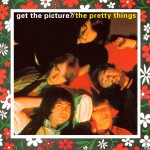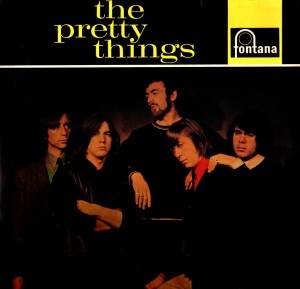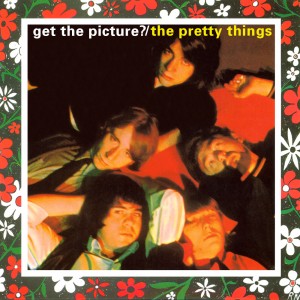Midnight to Six Man / Can't Stand the Pain est le cinquième 45 tours des Pretty Things, sorti en décembre 1965. C'est le premier enregistrement paru du groupe avec Skip Alan, qui a remplacé Viv Prince à la batterie un mois auparavant. Pour la face A, les Pretties sont accompagnés de deux claviéristes. Le premier est le légendaire musicien de studio Nicky Hopkins, plus connu pour avoir joué avec les Rolling Stones et les Kinks (Ray Davies lui a même dédié une chanson, Session Man). L'autre est Margo Croccito, l'organiste de Goldie and the Gingerbreads, l'un des tout premiers groupes de filles de l'histoire du rock. Titres Midnight to Six Man (Phil May, Dick Taylor) – 2 min 20 sCan't Stand the Pain (The Pretty Things) – 2 min 41 s Participants Skip Alan : batteriePhil May : chantBrian Pendleton : guitare rythmiqueJohn Stax : basseDick Taylor : guitare leadNicky Hopkins : pianoMargo Croccito : orgue HammondGlyn Johns : production Principales éditions 1965 : 45 tours, Royaume-Uni, Fontana TF 6471965 : 45 tours, Australie, Philips BF-2451965 : 45 tours, Danemark, Fontana TF 267 5271965 : 45 tours, Pays-Bas, Fontana TF 267 5271966 : 45 tours, États-Unis, Fontana F-1540 Critiques La presse musicale britannique accueille avec un grand enthousiasme ce 45 tours. Même Penny Valentine de Disc, rarement convaincue par les disques des Pretty Things, n'a que de bonnes choses à dire sur Midnight to Six Man dont elle apprécie tout particulièrement les paroles. Pour Derek Johnson, l'atmosphère pleine d'énergie compense largement la mélodie un peu faible et à ses yeux, c'est le seul tube en puissance sorti en cette toute fin d'année 1965. Record Mirror promet également au disque un bel avenir au hit-parade britannique, tout comme Cash Box de l'autre côté de l'Atlantique, des prédictions qui ne se réaliseront hélas pas. After a long, long wait a new single by the Pretty Things, who for some unaccountable reason, never really impress me much on disc.This I like a lot better than most, mainly because of the dear peculiar lyrics to the song. It’s a modern day tale of frustration, about this poor chap who, because he’s on the night shift, sleeps all day, never sees his friends by daylight, and can’t have a proper romance.Muffled drums, sparkly piano and a mysterious Phil May echo voice.“Can’t Stand the Pain” on the other side.Penny Valentine, Disc Weekly, 18 décembre 1965 Highly percussive opening, with piano and droning. Group vocal on a persuasive beater, with words that come over more clearly after a couple of plays. Good guitar figures . . . a repetitive sort of theme that has grow-on-you appeal. Stacks of excitement and chart-bound. Flip is weirdly soundfilled, with changes of tempo and good lead vocal.Record Mirror, 18 décembre 1965 In a week when the flow of releases has dropped to a mere trickle, owing to the Christmas holidays, this stands out as the only potential hit. Written by two of the group, Dick Taylor and Phil May, it’s driving, storming mid-tempo r-and-b, with strident guitar work and…


